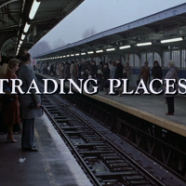Trading Places
I’m sure those of you in the US are delighted that betting in-play is gradually being introduced, as slow a process as it is, and as far behind in the delivery and options that are available in Europe. When bet in-play got off the ground in the UK 15 years ago the options were very limited but the sky now appears to be the limit.
For an NFL match for instance you simply had the option to bet the game at half-time with a readjusted line (money line and handicap) that was set off the pre-match line. It provided a brief opportunity to hedge a pre-match selection or get involved in the game for the first and last time. Over the 15 year period since then, rival companies have been in competition with each other to offer more and more games to bet on because they see opportunity in every sport. If a race is being run or a ball is being hit anywhere in the world, you can be sure that at least one betting company in the UK is trading it live.
The demands on traders have increased dramatically, particularly in the case of soccer and tennis. When I started trading for a book my usual shift consisted of trading three soccer matches one after the other with decent sized breaks in between each game – (aside from half-time) and I always had access to live pictures for the game.
In a matter of a few years those demands turned into up to twelve soccer matches a day or as many as seven to nine tennis matches during busy tournaments. Tennis events die down as the week progresses and tournament fields get whittled down but soccer is a never ending conveyer belt of matches. If a bookmaker has pictures or a feed you can be sure they are trading every match possible. I’ve traded leagues I didn’t even know existed and while I like to think I know my soccer, even I can’t claim to be an authority on the Australian Brisbane reserves league.
How can you trade twelve soccer matches in a shift you ask? By dealing as many as four matches at the same time which is now a frequent occurrence for most traders at the higher profile companies. Once you’ve sat down for the start of your shift chances are you’re not getting back up again until it’s time to leave. Those companies who aren’t yet trading multiple matches at the same time soon will be if they want to keep up with their competitors.
There are certain sports like basketball where this becomes difficult due to the manual nature of adding points onto the trading application. For soccer and tennis (where feeds play a bigger and bigger role allowing the trader to focus more on correct pricing rather than stopping/starting), the growth in responsibilities and sheer volume was bound to grow with increased demand.
The nuance of being able to add your own experience or expertise in certain leagues or matches is eroded and trading for a bookmaker in 2013 isn’t the dream job that many outside of the industry think it is. There is little stimulation in trading four soccer matches at the same time, none of which you have pictures for and without any interest or knowledge of the league and teams involved.
Trading really becomes a test of concentration. Ensuring your prices are where they should be in comparison to the rest of the market protecting against any arbing opportunities for sharp customers. Arbitrage customers look to back a market to less than 100%, being able to bet both sides in a match eliminating any risk. Arbs are offered frequently by traders, not intentionally, but either through lack of concentration or simply due to a seismic shift in the market – which happens particularly in Middle Eastern matches – where a trader’s attention is being occupied by the multiple matches traded simultaneously with a brief opening created.
If I’ve destroyed your image of the utopia that trading soccer is with a bookmaker, you’ll thank me later, rather than be hit in the face should you choose to go down this path. As much as a bookmaker will stress to its traders that they care deeply about the expertise being offered for particular matches, the truth is that they’re only concerned with the bottom line. In this case bottom line = matches, more turnover, more turnover, more profit. In the last fiscal year, one of the leading bookmakers in the UK made over £15 million profit – just from in-play events! That’s not taking into account pre-match markets or revenues created from betting shops over the counter.
I’ve traded over 3000 events myself for a bookmaker – yes, I’ve been counting! – not to mention matches traded in my own time, at my own leisure for personal immediate gain. The novelty wears off pretty quickly. You eventually hit a wall and the job becomes robotic. There is still latitude for many tennis events and that of other sports that are being singularly traded to incorporate your own view and leanings as far as pricing, but you can’t take views on events you know nothing about meaning it’s simply a case of staying in line with the market and managing your liabilities to the best of your ability.
These various stages of development will eventually hit the US once in-play is ramped up. As the landscape stands now it’s probably a few years away, particularly with the double standards that exist in US where it concerns sports betting as opposed to online gaming or even fantasy sports, of which I’ll touch upon next week.












